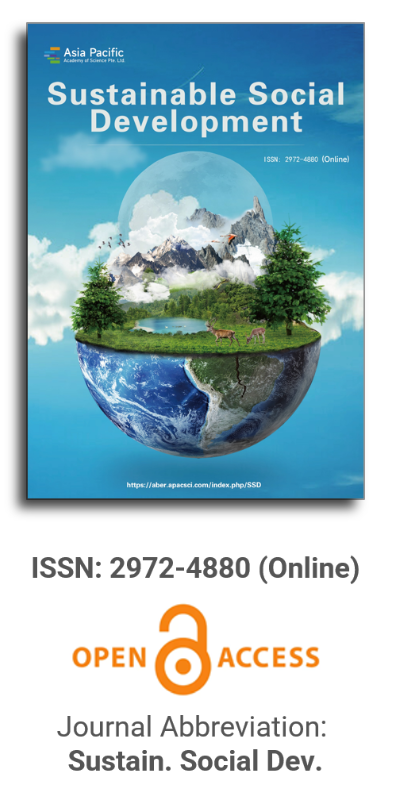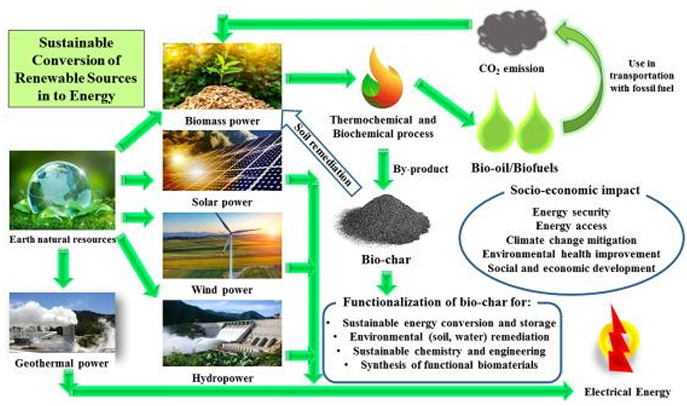
Asia Pacific Academy of Science Pte. Ltd. (APACSCI) specializes in international journal publishing. APACSCI adopts the open access publishing model and provides an important communication bridge for academic groups whose interest fields include engineering, technology, medicine, computer, mathematics, agriculture and forestry, and environment.

Towards concentric spatial systems for sustainable social development: Beyond western ethnocentric diametric spatial opposition and empty space
Vol 2, Issue 3, 2024
Download PDF
Abstract
This article outlines key features of an emerging spatial turn in education, the social sciences, and the humanities and its relevance to developing sustainable social systems, with a particular focus on inclusive systems. This is cognisant of UN Sustainable Goal 4 on Equitable Inclusive Education and Goal 1 on No Poverty. Offering a necessarily illustrative selection of key conceptual traditions and recent applications of spatial understandings pertinent to education and inclusion, with wider applicability, this proposed spatial turn is examined as offering critical alternatives to Western ethnocentric frames of space. This leads to contrasts between concentric spatial systems of inclusion, assumed connection, and relative openness and diametric spatial systems of exclusion, splitting, and mirror image oppositions in education and community spaces of relation.
Keywords
References
- Massey D. For Space. Sage Publications; 2005. doi: 10.1177/0309132507077092
- Downes P. Reconstructing Agency in Developmental and Educational Psychology: Inclusive Systems as Concentric Space, 1st ed. Routledge; 2019. doi: 10.4324/9781315101088
- Morioka M. Commentary: Constructing Creative Appropriations. Culture & Psychology. 2007; 13(2): 189-196. doi: 10.1177/1354067x07076606
- Downes P, Anderson J, Nairz‐Wirth E. Conclusion: Developing conceptual understandings of transitions and policy implications. European Journal of Education. 2018; 53(4): 541-556. doi: 10.1111/ejed.12305
- Vendra MC, Furia P. Introduction – Ricœur and the Problem of Space. Perspectives on a Ricœurian “Spatial Turn.” Études Ricoeuriennes/Ricoeur Studies. 2021; 12(2): 1-7. doi: 10.5195/errs.2021.576
- Ferrare JJ, Apple MW. Spatializing critical education: progress and cautions. Critical Studies in Education. 2010; 51(2): 209-221. doi: 10.1080/17508481003731075
- Descartes R. Descartes: Philosophical Writings. Nelson; 1954.
- Descola P. Beyond Nature and Culture Chicago and London: University of Chicago Press; 2005.
- Teo T. From Speculation to Epistemological Violence in Psychology. Theory & Psychology. 2008; 18(1): 47-67. doi: 10.1177/0959354307086922
- Lévi-Strauss C. Structural Anthropology: Vol. 1. Allen Lane; 1963. pp. 385-398.
- Levi-Strauss C. Structural Anthropology (Volume II). Basic Books; 1976. doi: 10.2307/3032172
- European Commission. European Education and Training Expert Panel. Available online: https://www.dcu.ie/sites/default/files/edc/pdf/european_union_postet2020_expert_panel_inclusion_and_citizenship_issue_paper.pdf (accessed on 2 April 2024).
- Cefai C, Downes P, Cavioni V. A Formative, Inclusive, Whole School Approach to the Assessment of Social and Emotional Education in the EU. Publications Office of the European Union; 2021.
- Conquergood D. For the nation: How street gangs problematize patriotism. In: Simons HW, Billig M (editors). After Postmodernism: Reconstructing Ideology Critique. Sage Publications; 1994. pp. 200-221.
- Bronfenbrenner U. The Ecology of Human Development: Experiments by Nature and Design. Harvard University Press; 1979. doi: 10.4159/9780674028845
- Downes P, Anderson J, Behtoui A, et al. Promoting Inclusive Systems for Migrants in Education. Routledge; 2024. doi: 10.4324/9781003263999
- Downes P, Li G, Van Praag L, Lamb S. The Routledge International Handbook of Equity and Inclusion in Education. Routledge; 2024.
- Downes P, Cefai C. Strategic Clarity on Different Prevention Levels of School Bullying and Violence: Rethinking Peer Defenders and Selected Prevention. Journal of School Violence. 2019; 18(4): 510-521. doi: 10.1080/15388220.2019.1566915
- Downes P. Prevention of Bullying at a Systemic Level in Schools: Movement from Cognitive and Spatial Narratives of Diametric Opposition to Concentric Relation. In: Jimerson SR, Swearer SM, Espelage DL (editors). Handbook of Bullying in Schools: An International Perspective. Routledge; 2009. pp. 517-533.
- Amir Y. The Role of Intergroup Contact in Change of Prejudice and Ethnic Relations. In: Katz PA (editor). Towards the Elimination of Racism. Pergamon Press; 1976. pp. 245-308. doi: 10.1016/b978-0-08-018316-9.50016-3
- Brown, R. Social identity theory: Past achievements, current problems and future challenges. European Journal of Social Psychology 16 November 2000; 30(6): 745-778. doi: 10.1002/1099-0992(200011/12)30:6<745::AID-EJSP24>3.0.CO;2-O
- Bradshaw CP. Preventing Bullying through Positive Behavioral Interventions and Supports (PBIS): A Multitiered Approach to Prevention and Integration. Theory Into Practice. 2013; 52(4): 288-295. doi: 10.1080/00405841.2013.829732
- Swearer SM, Espelage DL, Vaillancourt T, et al. What Can Be Done About School Bullying? Educational Researcher. 2010; 39(1): 38-47. doi: 10.3102/0013189x09357622
- Swearer SM, Peugh J, Espelage DL, et al. A socioecological model for bullying prevention and intervention in early adolescence: An exploratory examination. In: Jimerson SR, Furlong M (editors). Handbook of School Violence and School Safety: From Research to Practice. Lawrence Erlbaum Associates Publishers; 2006. pp. 257-273.
- Hughes J, Rahbari N. SEAK Canada: An Exploration of the Effects of PATHS on Health Service Use, Conference presentation. In: Proceedings of the 5th ENSEC (European Network for Social and Emotional Competence) International Conference; 1–4 July 2015; Lisbon, Portugal.
- Fonseca A. Resilience and psychomotricity in children from disadvantaged background, Conference presentation. In: Proceedings of the 5th ENSEC (European Network for Social and Emotional Competence) International Conference; 1–4 July 2015; Lisbon, Portugal.
- Minton SJ, O’ Mahoney M, Conway-Walsh R. A ‘whole-school/community development’ approach to preventing and countering bullying: the Erris Anti-Bullying Initiative (2009–2011). Irish Educational Studies. 2013; 32(2): 233-249. doi: 10.1080/03323315.2013.784637
Supporting Agencies
Copyright (c) 2024 Paul Downes
License URL: https://creativecommons.org/licenses/by/4.0/

This site is licensed under a Creative Commons Attribution 4.0 International License (CC BY 4.0).

Prof. Kittisak Jermsittiparsert
University of City Island, Cyprus






It is with deep regret that we announce the cancellation of the Forum on Sustainable Social Development & Computing and Artificial Intelligence, originally scheduled for June 15, 2025.

